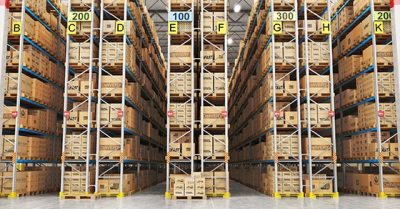
Pierre Liguori, Director of the supply chain consultancy firm, Tokema International, describes the challenges encountered by rail freight development in Europe beyond all communications around the China-Europe trains.
Major focus has been put on the New Silk Road initiative in 2017 with a significant emphasis put on China-Europe train shipments: rail freight was almost described as the new Eldorado in the European logistics landscape, many logistics service providers and shippers being attracted by this new solution.
But attention to this growing, albeit from a small level, network belies the deep government and industry reforms needed to push containerized rail to where it’s most needed: connecting European ports to the hinterland, and vice versa.
Whilst 45% of inland transportation in the USA was done by rail in 2013, rail freight account for only 17.8% of intra-european transport – compared to 19.7% in 2000. During the same period the road transport share increased from 73.7% to 75.4% – knowing the European freight market increased by 2.3% annually and that 25% of the trucks are reported to drive empty because of the lack of freight match back!
The EU commission set-up clear objectives in 2011: transfer 30% of the current freight tonnage above 300 kms from road to rail/barge by 2030 and 50% by 2050. It is clear now that these objectives will not be achieved.
An audit performed by the EU Court of Auditors in 2015 highlighted the following root causes to such a lack of performance:
- The main structural weakness of the freight market in Europe comes from the road transport supremacy for historical reasons. Despite significant funding for rail infrastructure development provided by the EU during the 2007-2013 period (28 billion euro) EU members governments mainly played a conservative approach in Western Europe when Eastern countries used the EU development funds to develop their road networks (80% of investments in the 2000’s). Countries like France decided to put priority on passenger transport rather than rail freight, especially using European funds to develop high-speed train networks. France did not show also any real political commitment to reduce the weight of road transport in the country.
- Rail infrastructure is a key issue: infrastructure development has always been driven by each EU member within domestic borders, usually managed by state-owned companies. This situation is mainly due to the fact such infrastructure was funded by local governments. Rail freight share has decreased since the 2008 financial crisis as governments invested less in new infrastructure but also less into maintenance of the existing networks. For the same reason – the financial crisis- shippers decided mostly to use road transport as from 2008 because of a lower cost.
- More free competition should be developed on the European market: although the EU opened rail freight to free competition on the entire trans-european network in 2001 (EU directive 2001/12/CE), effective on January 1st, 2007, more should be done. As a first step state-owned companies had to split their activities between infrastructure management and providers of rail freight services. But protectionist practices still exist as train time slots are still allowed by each national infrastructure company and not centrally.
- National rules and regulations are not harmonized at the EU level. Rail freight development was basically easier to achieve in the US or Australia when 26 different entities literally exist in Europe instead of having a single integrated legislation. This lack of cooperation between each member infrastructure management body creates service disruptions: rail freight trains in Europe achieve an average speed of 18 to 30 km per hour due to administrative constraints, waiting times, lack of central management, etc… when the average truck speed on european roads is 60 km / hour.
- Administrative complexity: to arrange a train from Rotterdam to Spain, 4 different national infrastructure companies (NL, BE, FR, SP) have to give a time slot within different legal and administrative rules. This is a major issue to achieve attractive transit times, online visibility and be cost-competitive. In addition booking procedures are quite complex.
Despite these issues the EU commission is pushing further for rail freight development. In addition to reducing carbon dioxide emissions by 30%, facilitating free circulation of goods within Europe is part of the European Union DNA. And the quality of inland transportation is a key success factor for ports development.
Major initiatives have been developed to further promote rail freight. For example, 9 ‘rail freight corridors’ have been created to ensure a consistent and efficient rail network is developed on the continent. A single ‘booking center’ has been implemented for these freight corridors that avoid the rail operator to ask each single national infrastructure management company for time slots. Time slots are now confirmed 2 months in advance. The average train speed on such corridors has improved to 50 km/hour close now to trucks average commercial speed. A successful example is the success of the port of Hamburg – Northern Italy freight corridor.
But the most challenge to attract more shippers to use rail freight is to drive costs down. It cannot be achieved only with additional volumes, more competition and less bureaucracy: as infrastructure costs are paid by train slot, the length of trains and the related number of coaches is critical to decrease operating costs. Here again harmonisation would be welcome: the average train length in Spain accounts for 450 meters compared to 740 meters in France… and between 1,500 to 2,000 meters in the USA.
Finally, strong political commitment is – as always – critical to success. Several European countries increased their rail freight share between 2000 and 2013 when the average EU share decreased: Germany achieved a +43% increase in 15 years (23.5% in 2013), the UK +15% when 40% of the freight moved in Switzerland was done by rail.
The current success of the China-Europe initiative is due to the strategic willingness and commitment of a continent-state: China. If the EU wants to achieve its 2011 agenda and objectives, initiatives must be decided and implemented at the European level, not anymore at the national levels only.
Time to move on!


